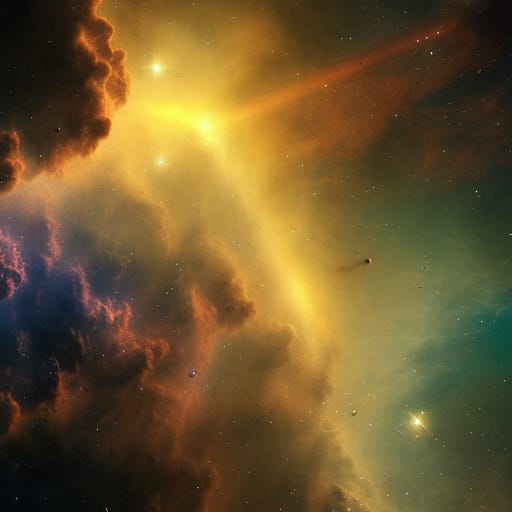Space: Nebula

A nebula is a vast cloud of gas and dust in space, often serving as a stellar nursery where stars are born or as the remnants of dead stars. Nebulae are found throughout galaxies and provide important insights into the life cycle of stars and the evolution of the universe. Here are the important aspects of nebulae:
Composition: Nebulae are primarily composed of hydrogen and helium gas, along with dust and other elements such as carbon, nitrogen, and oxygen. The gas and dust within a nebula can interact under the influence of gravity, leading to the formation of stars and other celestial bodies.
Types: There are several types of nebulae, including emission nebulae, reflection nebulae, dark nebulae, and planetary nebulae. Emission nebulae emit light due to the ionization of their gas by nearby hot stars. Reflection nebulae do not emit their own light but reflect the light from nearby stars. Dark nebulae are dense clouds of dust and gas that obscure the light from stars behind them. Planetary nebulae are the remnants of dying stars that have shed their outer layers, leaving behind a glowing shell of gas.
Star formation: Nebulae play a crucial role in the process of star formation. Under the influence of gravity, dense regions within a nebula can collapse, leading to the formation of protostars. As these protostars accumulate mass and increase in temperature, they eventually ignite nuclear fusion, giving birth to new stars.
Stellar nurseries: Some nebulae, such as the Orion Nebula and the Eagle Nebula, are known as stellar nurseries due to the large number of stars that are formed within them. These regions provide astronomers with valuable insights into the process of star formation and the early stages of stellar evolution.
Planetary nebulae: When a low- to medium-mass star (like our Sun) reaches the end of its life cycle, it sheds its outer layers, creating a planetary nebula. The core of the star remains as a white dwarf, which ionizes the surrounding gas, causing it to emit light and create a glowing shell.
Supernova remnants: When a massive star reaches the end of its life, it explodes in a supernova, ejecting its outer layers and leaving behind a dense core (neutron star or black hole). The ejected material can create a supernova remnant, which is a type of nebula that expands and interacts with the surrounding interstellar medium.
Size and shape: Nebulae can vary greatly in size and shape, with some spanning several light-years across. Their shapes are influenced by a variety of factors, such as the distribution of gas and dust within the nebula, the presence of nearby stars, and the interactions between the nebula and its surrounding environment.
Color: The colors observed in nebulae are primarily due to the ionization of gases within the nebula. For example, the red color often seen in emission nebulae is a result of hydrogen gas being ionized, while the green and blue colors seen in some planetary nebulae are due to the ionization of oxygen and other elements.
Observation: Nebulae are observed using telescopes that are sensitive to various wavelengths of light, such as visible, infrared, and radio waves. Some of the most famous nebulae, like the Crab Nebula, the Pillars of Creation within the Eagle Nebula, and the Horsehead Nebula, have been captured by telescopes like the Hubble Space Telescope, revealing stunning details of their structure and composition.
Importance: The study of nebulae is essential for understanding the life cycle of stars, the formation of planetary systems,